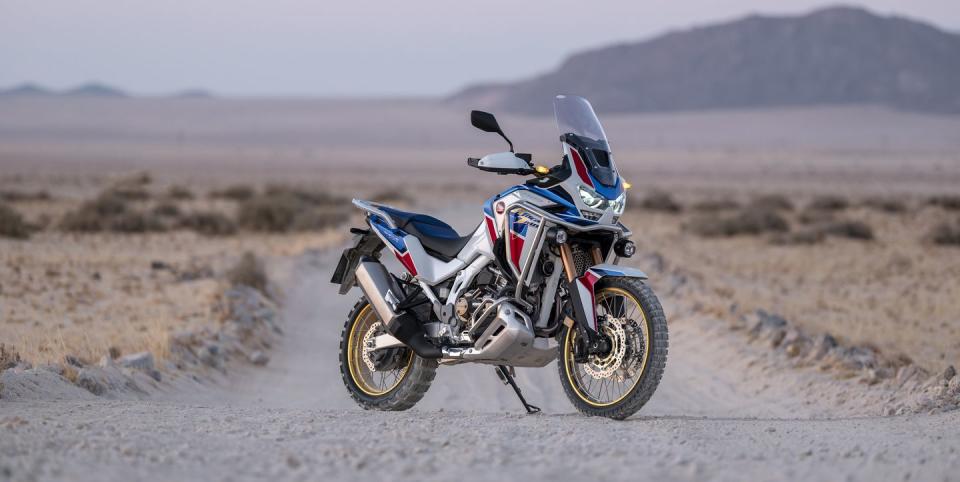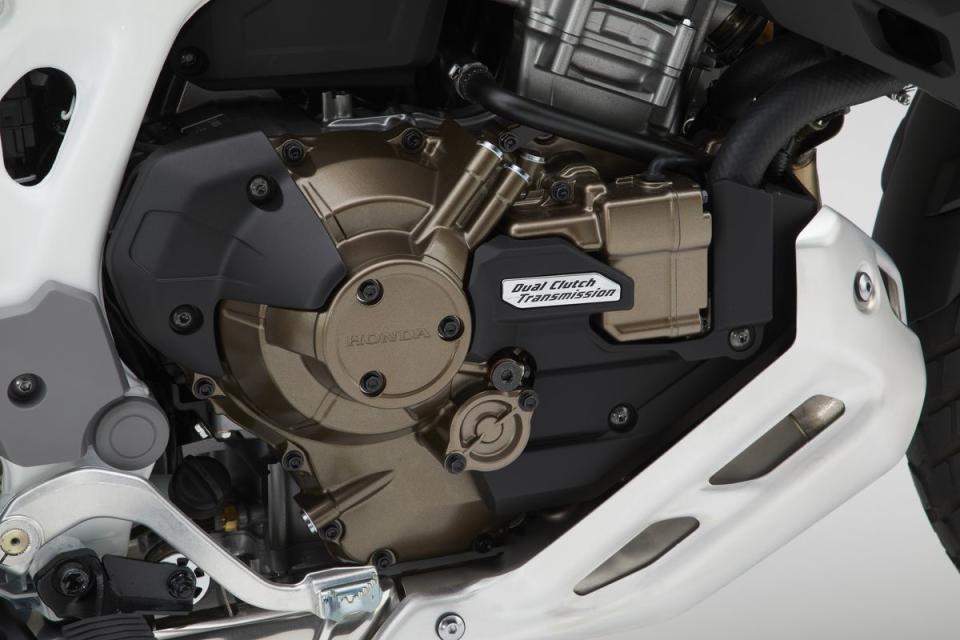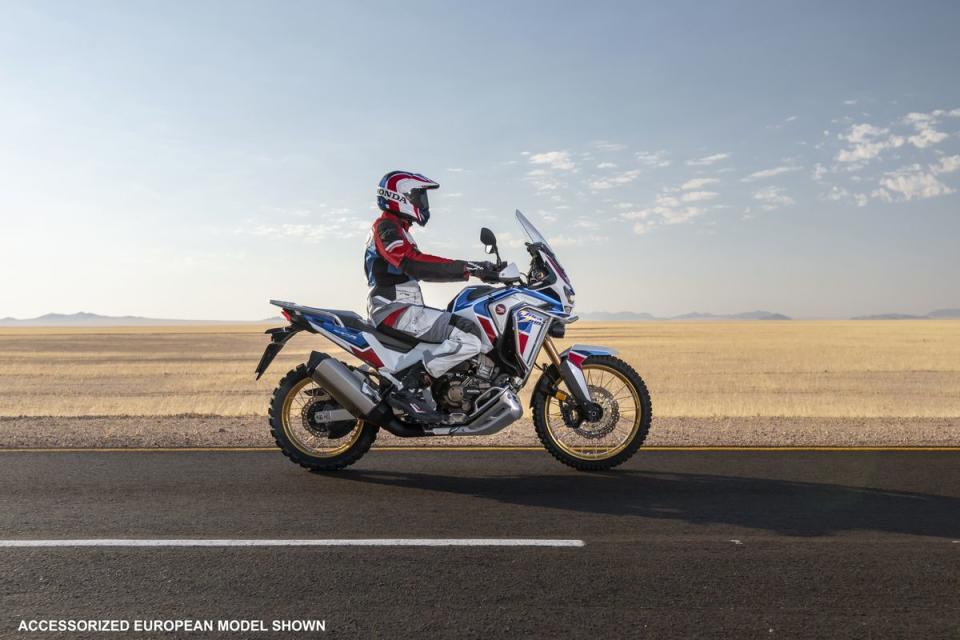God Help Me, I Love Honda's Automatic Transmission For Motorcycles

The allure of motorcycling is simplicity. A pared-down machine that thrusts you into the wind and weather, there to experience all the joy and agony of high-speed travel rushing against you. Modern automobiles push us further and further from the mechanical acts of driving; a motorcycle draws you right in close.
Which is why I'm so flummoxed by Honda's dual-clutch automatic motorcycle transmission. It's a technology I should absolutely despise, but I'm fully in love.
Honda's been making dual-clutch motorcycles since 2010; the company also offers a similar gearbox in its ATVs and side-by-side utility vehicles. And Honda isn't the only manufacturer making automatic bikes: Yamaha offers a semi-automatic motorcycle with an automated clutch, and numerous scooters and scooter-like bikes offer CVTs. (Electric motorcycles are "automatic" in the sense that there's no shifting involved—they have a single gear and no clutch mechanism.)
But until this spring, I had never ridden any form of automatic motorcycle. Then I spent a Sunday visiting my friend Rob Doyle, who oversees Honda's fleet of review motorcycles for the NYC area. For our day of riding, Rob fixed me up with a new Africa Twin, the latest iteration of Honda's legendary all-terrain adventure bike, with the $800 optional dual-clutch transmission.

The first few minutes on a DCT bike are bizarre. You have to recalibrate yourself to the responsiveness of the thing. With any manual-transmission vehicle, there's a fraction-of-a-second delay between when you start engaging the clutch and when the vehicle starts rolling. With a little practice, you learn to anticipate this microscopic delay, so you can smoothly drive around without missing gaps in traffic or getting honked at when the light turns green.
In some dual-clutch cars, this delay is especially pronounced. The latest-generation automotive DCTs are much better, but in the early days, it could feel like an eternity between when you nudged the throttle and when the computer realized you needed the clutch engaged so the car would move.
On the Africa Twin, I had the opposite problem. The bike starts moving the nanosecond you twist the grip. There is no discernible delay; the bike's computer engages the clutch seamlessly with the smallest breath of throttle, without the flurry of revs or acrid-smelling clutch slippage of some less refined DCTs. The first few times I pulled away from a stop, I startled myself, the bike motoring forward just a half a beat sooner than I expected. It takes a minute to get used to rolling away without having to play the clutch-throttle balance game. It's a lot like driving an electric car, where there's no delay for clutches to engage or a torque converter to spool up. After three stop signs, I got comfortable with the Africa Twin's immediacy; from there on, it became a delight, making the bike feel ultra responsive and sharp.
The Africa Twin's six-speed DCT offers four modes: Drive, Sport 1, Sport 2, and Sport 3. Left in Drive, the bike upshifts obsessively, holding the revs well below 3000 in calm surface-road cruising. The big 1084-cc parallel twin has no trouble motivating the bike at those low engine speeds, but it's certainly not the most vivacious way to ride. I found Sport 2 to be the sweet spot, with higher shift points that pretty closely mimicked the way I'd choose gears. The engine sounds great, throaty and muscular, and kept around 4000 rpm it's nice and snappy.
Of course, you can manually shift the DCT. Honda's automatic bikes don't have a clutch lever or a foot shifter; instead, you get toggles on the left hand grip, upshifting with your index finger and downshifting with your thumb. At first, I played with the toggles pretty much incessantly, just like I did the first few times I drove a dual-clutch sports car back when that technology was new. The instant gear changes and uninterrupted power are a fun novelty coming from conventional clutch-and-shifter bikes. Honda's motorcycle brochure says, "Ever knock helmets with your passenger when shifting? That won’t happen with a DCT." I only rode the Africa Twin solo, but every shift was utterly smooth. And with the Africa Twin aimed at all-terrain adventuring, the dual-clutch makes a case for itself: imagine how much easier it would be to navigate tough, technical low-speed terrain without having to worry about slipping the clutch too much or rolling back on an uphill.
But after a few minutes, I let the DCT shift itself. It made riding simpler, more pleasant. With gear selection outsourced, I was able to focus more fully on the fundamentals of riding: keeping my eyes up and ahead, looking through the curves, trusting my peripheral vision and staying alert and focused on everything around me. I'm still a relative novice motorcyclist, having picked up the hobby in my mid-thirties. Gliding along, focused entirely on my speed and my line through the winding curves of a beautiful country road, it was easier to enter what sports psychologists call the "flow state," that feeling of being fully immersed in a task, energized by focus and the reward of doing a task well. That feeling is the whole reason why we ride. The DCT helped me get there, and stay there.

I don't think I'll buy an automatic motorcycle any time soon. For one thing, the Africa Twin I rode stickers at over $15,000; a fully optioned model with the DCT can come within kissing distance of $18,000. Honda offers the dual-clutch on a handful of models, ranging from the $8900 NC750X to the top spec Gold Wing that commands more than $32,000. As a percentage of Honda's overall bike sales, DCTs are a small subset, but as a spokesperson told our sister publication Autoweek last year, more than half of Goldwing buyers pick the automatic, along with a third of Africa Twin buyers.
For my own money and riding habits, I'll stick with a clutch lever and a foot shifter, at least for now. Mechanical purity, the feeling of connecting with the machine, is why I ride. Modern automobiles are swiftly moving away from the old standards we love—naturally aspirated engines and manual transmissions—and replacing them with layer upon layer of isolation, filtration, and electronic safety nets. Raw mechanical purity lives on in motorcycles. It's possible that the last new internal-combustion, manual-transmission vehicle will be a motorcycle, and that we'll see it live and die within our lifetimes.
But I'm grateful for the fact that motorcycle technology hasn't become stagnant. That the designers and engineers working on the next generation of two-wheeled transportation aren't simply rehashing the past. Honda's dual-clutch motorcycle transmission is a wonderful achievement, that rare example of a technological advancement bringing you closer to the pure joy that motorcycling offers. If loving that is wrong, I don't wanna be right.
You Might Also Like

 Yahoo Autos
Yahoo Autos 